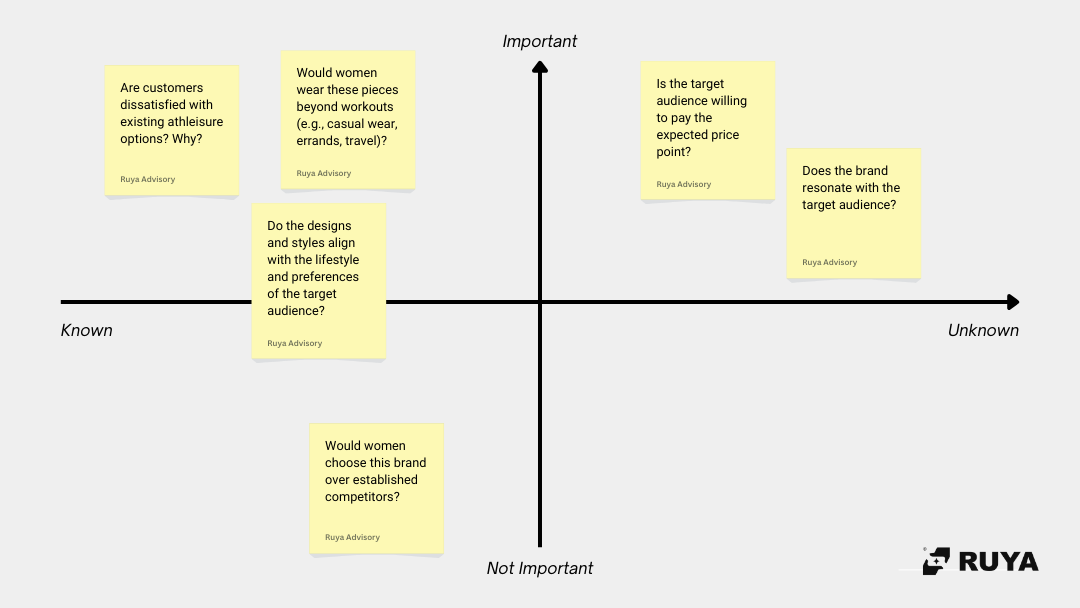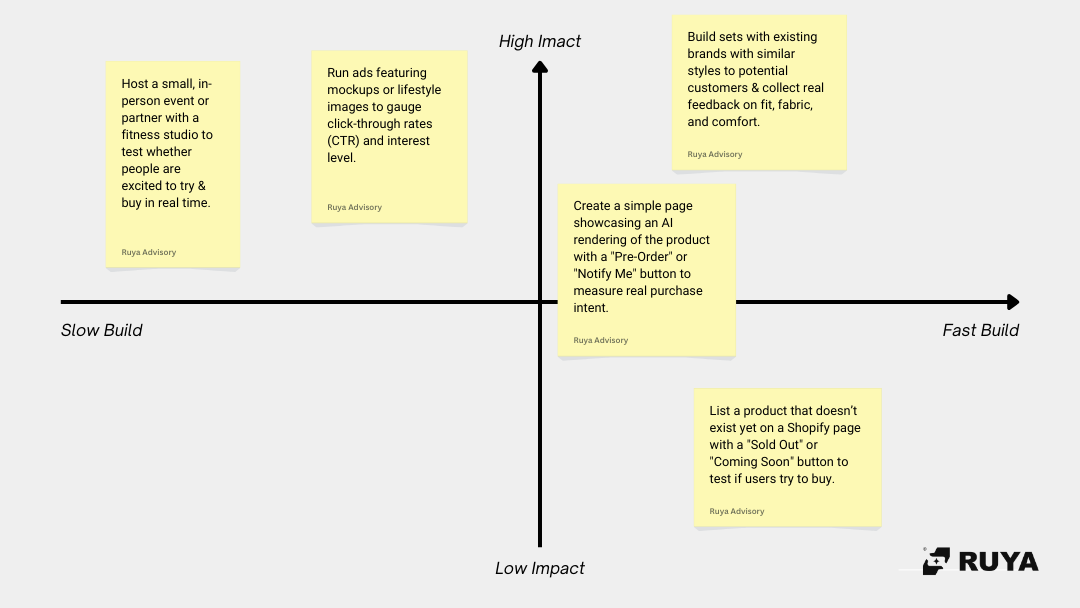How I Got 35+ No-Code Prototype Ideas in 30 Minutes (and How You Can Too)
A simple 3-step framework to generate and test startup ideas, FAST.
In this edition
✅ A 3-step framework to validate your idea without writing a single line of code
✅ 9 powerful prototyping techniques with step-by-step implementation
✅ A practical method to prioritize which prototypes to test first
How I Got 35+ No-Code Prototyping Ideas in 30 Minutes
Last year, I worked with an amazing founder in the sports and athleisure industry.
We collaborated to refine and validate her brand using our Build.OS framework.
The process was going great.
We did amazing discovery sessions, defined an excellent opportunity, and came up with a ton of ideas of how we could solve the core problem our customers were having.
Then we got to the prototyping stage.
In this step in the process, it was all about getting maximum validation with rapid and fake versions of the product.
Suddenly, one big doubt crept into our conversations:
"How can I even begin to create a prototype?"
The idea of NOT building something but still showing it to customers made no sense to her.
I told her confidently:
"We’re going to come up with some amazing approaches to do this."
And we did.
We went into our session, and in 30 minutes, we brainstormed 35+ ways she could prototype her brand without creating a single item.
Not bad no?
And it’s all using the exact three-step process I’ll share with you today.
Problem: Most Founders Waste Time Building Too Soon
Many founders believe they need to build a fully functional product before testing the market.
Reality check:
🔻 Building too early = high cost, high risk.
🔻 You might spend months developing… only to find out nobody wants it.
🔻 You don't need to code or manufacture to validate an idea.
Instead, the key is to validate before you build.
How? By using fast, no-code prototyping techniques to test assumptions within hours, not months.
The 3-Step Framework for No-Code Validation
Step 1: Identify the Assumptions You Need to Test
Before prototyping, you need to identify your riskiest assumptions:
Write down all the assumptions you have about your solution.
Map them on a 2x2 matrix (developed by David Bland @ GV):
Important vs. Not Important
Known vs. Unknown
Focus on testing the “Important + Unknown” quadrant. This is where risk lives.
In our case, our biggest assumption was: Will the idea have enough appeal? Will people pay a premium for this brand?
Step 2: Choose a Prototyping Method (9 No-Code Techniques)
Once you know what to test, it’s time to prototype fast.
There are 9 EFFECTIVE ways for you to churn out a quick prototype, without a single line of code:
1. Paper Prototyping – Sketch ideas quickly for feedback.
✅ How to do it:
Draw a rough sketch of your product or website.
Show it to 5+ potential customers and ask them to explain what they see.
Note where they get confused and adjust accordingly.
2. Wizard of Oz – Fake automation while doing the work manually.
✅ How to do it:
Set up a simple interface that looks like a working product.
Perform the service manually behind the scenes (e.g., AI tool that is really you responding).
Track whether users engage and find value in it.
3. Piecemeal Prototyping – Combine existing tools to simulate functionality.
✅ How to do it:
Use existing tools to fake a product (ex. combine Zapier + Google Sheets + Typeform to mimic automation).
Observe how users interact before building a real system.
4. Video Prototyping – Show a demo instead of building.
✅ How to do it:
Create a short Figma or Canva mockup video demonstrating your product.
Share it with potential users and gauge interest.
Measure reactions: Are they excited? Confused? Indifferent?
5. Landing Page Testing – Validate demand with a simple page.
✅ How to do it:
Create a basic landing page using many of the ready to go site builders.
Add a “Sign Up” or “Preorder” button.
Run ads or post on social media, measure interest, clicks and sign-ups.
6. Storyboarding – Map the user journey visually.
✅ How to do it:
Sketch a sequence of steps showing how users would interact with your product.
Share it with potential customers and get their reactions.
Look for missing steps or confusion in the journey.
7. Role-Playing – Act out interactions as if the product exists.
✅ How to do it:
Pretend to be your product and manually perform the service.
Walk through real customer scenarios.
Observe reactions and refine accordingly.
8. Fake Door Testing – Measure clicks on a “Coming Soon” feature.
✅ How to do it:
Promote the new solution you’re bringing to life.
Add a non-functional button (“Try Now” or “Preorder”).
Track how many users click it.
If there’s high interest, you have validation.
9. No-Code Tools – Build an MVP without coding.
✅ How to do it:
Use tools like bolt, lovable or replit to create a basic product.
Get it in front of users and track interactions.
Iterate based on feedback before hiring developers.
Step 3: Prioritize the Best Prototype to Test
Now that you have prototyping ideas, prioritize them based on:
Impact – How much does it help validate our major assumption(s)?
Ease of Execution – Can it be built fast (1hr to less than a day max)?
Your best quadrant is high impact, easy to execute.
Choose 1-3 prototypes in that quadrant to test with users today.
Tip: These rapid prototyping techniques work wonders for a founder just starting up, or an established product looking to iterate and refine features.
Once your prototypes are done, you’re ready for rapid user testing to get early validation on your product.
All of this can be done in a single day.
Imagine doing this 10x over a month. With every new prototype being optimized by the results you get from the previous test.
You’ll end up with a really powerful and defined idea for what solution you’re building, even before building it.
Let’s get to work, Majd
More?
Hi, I’m Majd. I help early-stage founders build, go-to-market, and fundraise for their ventures. Here’s how I can support you:
Daily Insights: Follow me on LinkedIn for startup strategies, tips, and real-world tactics
Free Report: Try the Problem-Solution Pulse: get an 11-page personalized breakdown of your startup's foundation.
Advisory Support: Explore Ruya Advisory to see how we can work together 1:1 or through founder programs








On point as usual.